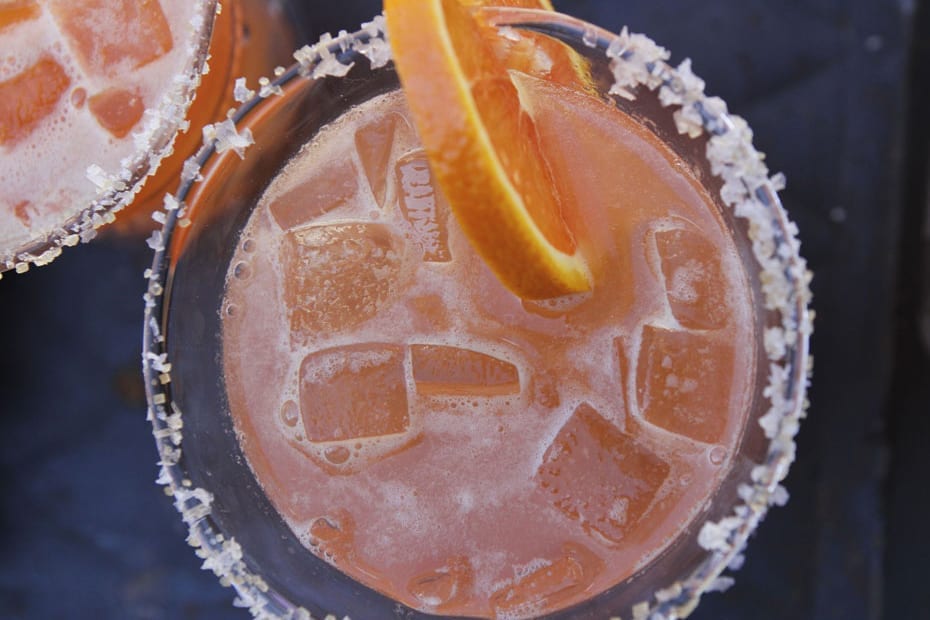Warning: I wrote this post after concocting and taste testing this cocktail, so my apologies in advance for any typos. As always, I blame it on the booze.
I’m obsessing over cara cara oranges. These citrus beauties may look like ordinary oranges on the outside but inside they are the prettiest peachy-pink and have a delicious, juicy sweetness. It looks, tastes and smells like the promise of spring. Cara caras are so appropriate for this season of love – cara translates across languages as beloved, friend, my dear one, face to face.
From California’s San Joaquin Valley, they’re typically in season December-April, so you should be able to track them down at the market. With few to no seeds and low acidity, they make a great treat for kids and an excellent treat for adults, especially when mixed with a little gin.
This delightful cocktail is refreshing, tasty and not too sweet. It’s pretty and also packs a little punch, perfect for a night in with your beloved.
My Beloved Cocktail Recipe (Serves 2)
Step 1: Prep your glasses. Mix 1 tablespoon of sea salt with 1 teaspoon raw sugar. Wet rim with wedge of cara cara orange, then dip in the salt mixture.
Step 2: Fill your glasses with ice

Step 3: Mix together, then shake the following ingredients in ice-filled cocktail shaker
- ½ cup of cara cara orange juice (from about 2 oranges)
- 2 ounces gin
- 1 ounce St. Germain
- 1 ounce pomegranate juice (I like POM)
- Juice of ½ lemon
Step 4: Pour into glasses and enjoy some face-to-face time.
A little scientific side note: In my research, (which does involve more than cocktail testing) I discovered an interesting cara cara fact. Because this citrus is seedless, it is also sterile – which means that the only way to cultivate it is by grafting onto other varieties of citrus trees. This is interesting because it means that the genetic make-up of current cara cara’s is the same as the original tree grown in 1820.

Cheers!





